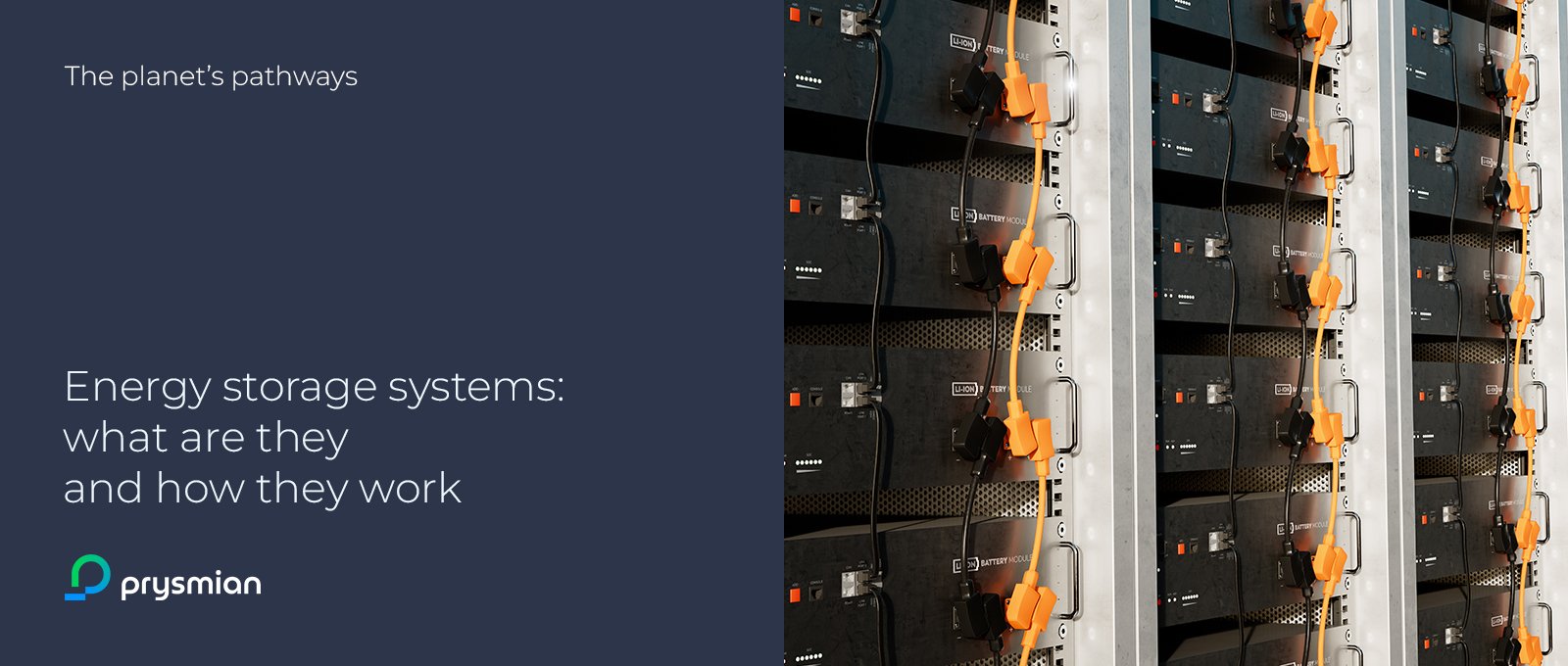Electrical energy is a form of energy that cannot be stored directly, but has to be transformed into other forms, such as chemical, thermal, mechanical or potential energy; these forms of energy can then be converted back into electrical energy when needed. Energy storage systems are devices capable of carrying out these transformations in an efficient and controlled way, allowing to better manage energy supply and demand nationwide.
Energy storage systems: what are they and how they work

What is an energy storage system?
An energy storage system is a device or set of devices that can store electrical energy and supply it when needed. It is a fundamental technology for ensuring the safety, reliability and sustainability of the electricity system, especially in the presence of renewable energy sources, such as solar and wind, which have variable and intermittent production.
How does an energy storage system work?
An energy storage system consists of three main components:
- a power conversion system, which transforms electrical energy into another form of energy and vice versa;
- a storage unit, which stores the converted energy;
- a control system, which manages the energy flow between the converter and the storage unit.
The operation of an energy storage system depends on the type of technology used, which can be chemical, electrochemical, mechanical, thermal, or electromagnetic in nature.
What are the types of energy storage systems?
There are different types of energy storage systems, which differ in their technical characteristics, performance, costs and applications. The most widespread types include:
- batteries, which are electrochemical devices that store energy in the form of electrical charge. There are numerous types of batteries, such as lead-acid, lithium-ion, sodium-sulphur, nickel-cadmium, and redox flow;
- flywheels, which are mechanical systems that store energy in the form of kinetic energy. These are high-speed rotating discs, supported by magnetic bearings and contained in a vacuum chamber, which can store and supply energy quickly and efficiently;
- pumped storage hydropower, which is a mechanical system that stores energy in the form of gravitational potential energy. These plants exploit two water reservoirs located at different altitudes, between which water is pumped and then released through turbines according to electricity supply and demand;
- compressed air energy storage plants, which are mechanical systems that store energy in the form of elastic potential energy. These are devices that compress air in underground containers or special tanks, and release it when needed to power a gas or steam turbine;
- ice thermal energy storage, which is a system that stores energy in the form of thermal energy. These devices produce ice during hours of low electricity demand and use it during peak hours to cool premises;
- supercapacitors, which are electromagnetic systems that store energy in the form of an electric field. These devices accumulate electrical charge on two electrodes separated by a dielectric material, and can store and release energy very quickly and with a long duration.
What are the benefits of energy storage systems?
Energy storage systems offer numerous benefits for the electricity system and end-users. First of all, they allow frequency and voltage to be adjusted, keeping the electricity grid parameters within the established limits and thus avoiding instability, overloads or blackouts. At the same time, they make it possible to modulate consumption according to the energy availability and cost, reducing demand peaks and increasing energy efficiency. In addition, they allow electricity to be consumed and produced autonomously and independently of the power grid, increasing resilience and security.
Secondly, energy storage allows for economic savings, thanks to energy arbitrage: buying electricity when the price is low and selling it when the price is high, taking advantage of fluctuations in the electricity market and optimising profits.
Moreover, storing energy facilitates the use of renewable sources: by compensating for the variability and intermittency of energy production from sources such as solar and wind, it ensures greater penetration and less dependency on fossil fuels.
Energy storage systems and renewables
Storing energy is key to supporting the transition to a renewables-based energy system. In fact, renewable sources, such as solar and wind, have variable energy production depending on weather and seasonal conditions, which does not always coincide with users' energy demand. This creates an imbalance between supply and demand that can lead to wasted energy or the need for integration from conventional sources.
Energy storage makes it possible to overcome this problem by storing excess energy produced from renewables when demand is low and returning it to the grid or users when demand is high. In this way, the need for energy from fossil fuels is reduced, greenhouse gas emissions are avoided and the amount of renewable energy in the energy mix is increased.




